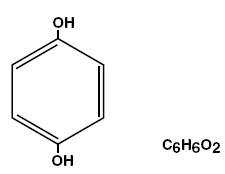Obagi Condition and Enhance
Generic name:hydroquinone
Dosage form: cream
Drug class:Topical depigmenting agents
Medically reviewed by Drugs.com. Last updated on Nov 22, 2021.
Disclaimer: This drug has not been found by FDA to be safe and effective, and this labeling has not been approved by FDA. For further information about unapproved drugs, click here.
On This Page
Rx Only
FOR EXTERNAL USE ONLY
Obagi Condition and Enhance Description
Hydroquinone is 1,4-benzenediol. Hydroquinone occurs as fine, white needles. The drug is freely soluble in water and in alcohol. Chemically, hydroquinone is designated as p-dihydroxybenzene; the empirical formula is C6 H6 O2; molecular weight is 110.0.
Obagi® Condition & Enhance Blender contains Hydroquinone USP 40 mg/gm in a base of purified water, glycerin, cetyl alcohol, PPG-2 myristyl ether propionate, sodium lauryl sulfate, TEA-salicylate, lactic acid, phenyl trimethicone, tocopheryl acetate, sodium metabisulfite, ascorbic acid, methylparaben, saponins, disodium EDTA, BHT, and propylparaben.

Obagi® Condition & Enhance Clear contains Hydroquinone USP 40 mg/gm in a base of purified water, cetyl alcohol, glycerin, sodium lauryl sulfate, stearyl alcohol, tocopheryl acetate, ascorbic acid, sodium metabisulfite, lactic acid, saponins, disodium EDTA, methylparaben, BHT, propylparaben, and butylparaben.
Obagi Condition and Enhance - Clinical Pharmacology
Topical application of hydroquinone produces a reversible depigmentation of the skin by inhibition of the enzymatic oxidation of tyrosine to 3, 4-dihydroxyphenylalanine (dopa) and suppression of other melanocyte metabolic processes.
Exposure to sunlight or ultraviolet light will cause repigmentation of the bleached areas, which may be prevented by the use of sunblocking agents or sunscreen agents contained in Obagi Condition & Enhance.
Indications and Usage for Obagi Condition and Enhance
The gradual bleaching of hyperpigmented skin conditions such as chloasma, melasma, freckles, senile lentigines, and other unwanted areas of m...



